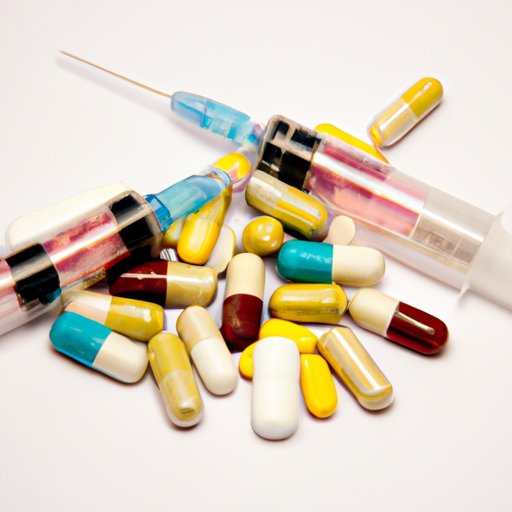
Introduction
Vaccines are one of the most important tools in the prevention of infectious diseases, reducing the spread of disease and saving lives. However, a common question that arises is whether vaccines are free. In this article, we will explore the economics of vaccines, access to vaccines, how vaccine prices are determined, and the importance of free vaccines in protecting public health.
The Economics of Vaccines: Why Vaccines are Free and How They’re Funded
Developing and producing vaccines can be expensive, with costs totalling in the millions of dollars. However, vaccines are often paid for by governments, philanthropic organizations, and other means, making them free or low-cost to the end user. Additionally, vaccines are often considered a public good, meaning their benefits extend beyond the individual to society as a whole. This makes vaccines a priority for government funding and ensures that they remain accessible to all.
Access to Vaccines: How Governments Ensure Vaccines are Available to All
Governments play a crucial role in providing access to vaccines, particularly in less developed countries where the infrastructure for healthcare provision may be weaker. Vaccine distribution may be managed centrally, with vaccines offered through clinics, hospitals or community health centers. In some countries, vaccines may be provided through mobile clinics or outreach programs which target specific at-risk populations. However, challenges remain in ensuring access to vaccines, particularly in rural areas or during times of conflict or crisis.
Understanding Vaccine Price: Are Vaccines Really Free to Patients?
While vaccines may be free to patients in some countries or under certain programs, the cost of developing and producing vaccines is significant. Vaccine prices can vary widely, depending on the vaccine in question, the country in which it is being provided, and the recipient. However, many countries work to reduce the cost of vaccines for patients, with governments negotiating with pharmaceutical companies to obtain favourable prices, or looking to donors to help subsidize the cost of vaccines. In some cases, vaccines may be provided through donations from organizations or purchased at a subsidized rate through the World Health Organization.
The Importance of Free Vaccines: How They Help Protect Public Health
Vaccinations are vital to the prevention of the spread of disease, reducing the transmission of pathogens and protecting both individuals and communities from illness. When vaccines are free and widely available, they make it easier for individuals to protect themselves against common diseases and prevent future outbreaks. Programs such as routine childhood vaccination schedules have been successful in reducing the incidence of diseases such as measles, polio, and rubella, and have saved countless lives.
Breaking down Misconceptions: Why Vaccines are Free and Safe for Everyone
While vaccines are safe and effective, there can be misconceptions and concerns about their use, particularly around issues of safety and effectiveness. However, vaccines are thoroughly evaluated before being approved for use and are continually monitored for safety and efficacy. Many vaccines contain only small amounts of active ingredients that help to boost the body’s immune response, and the perceived risks associated with vaccines are often significantly overestimated. By addressing misconceptions and concerns around vaccines, we can help to ensure that individuals feel confident in using available vaccines and can access the protection they provide.
Conclusion
Vaccines are a vital aspect of public health, helping to prevent the spread of infectious diseases and protect individuals and communities from the risks associated with illness. While vaccines may not always be free to produce, governments and other organizations work to ensure that vaccines remain accessible and affordable for all individuals. By addressing concerns around vaccine safety and efficacy, we can help to ensure that more people feel comfortable using these important tools in preventing the spread of disease and protecting public health.





